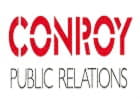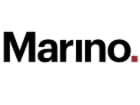Hasbro (NASDAQ:HAS) kicked off 2020 by completing its acquisition of British TV and film producer Entertainment One -- part of its plan to create a unified "play and entertainment company," as Hasbro puts it. The pandemic put many of those ambitions on hold, but Hasbro's vision still seems sound. As the long-term effects of COVID-19 reshape the entertainment industry, the next five years look promising for Hasbro.
TV production hits a wall
Through the first nine months of 2020, sales of Hasbro's stable of brands (including Transformers, Play-doh, and Monopoly, to name just a few) are performing well. Reported revenue was up 14% year over year to $3.74 billion. Free cash flow rose 34% to $402 million, good for a healthy free cash flow profit margin of nearly 11%. After a tough couple of years following the Toys "R" Us bankruptcy, Hasbro has made solid progress diversifying its retail sales into online outlets.

IMAGE SOURCE: GETTY IMAGES.
However, the year-over-year growth in 2020 is due in large part to the $4 billion acquisition of Entertainment One (eOne). Getting access to children's TV series like Peppa Pig and PJ Masks -- among other TV, movie, and music productions for kids and grown-ups -- just in time for the pandemic lockdown would appear to be fortuitous on Hasbro's part. No such luck here, though, at least not in the short term. Entertainment production has been mostly sidelined this year because of shelter-in-place and remote work orders.
Simply put, with new TV and movies on hold, eOne's revenue has been in sharp decline this year, and the newly acquired segment has swung to an operating loss as a result.
Period | Entertainment One Revenue | YOY Revenue Change | Entertainment One Operating Profit (Loss) |
|---|---|---|---|
| Q1 2020 | $342.5 million | (27%) | ($33.1 million) |
| Q2 2020 | $160.9 million | (30%) | ($6.0 million) |
| Q3 2020 | $193.5 million | (32%) | ($25.9 million) |
DATA SOURCE: HASBRO.
An imperfect but promising play on entertainment
It's been a difficult year for Hasbro, but its reasons for acquiring eOne look more important than ever. At-home streaming entertainment is on the rise, and studios and tech platforms like Disney (NYSE:DIS), AT&T's (NYSE:T) Warner Media, and Netflix (NASDAQ:NFLX) are poised to increase spending on content for their online services by billions in the years to come. Hasbro has already had success licensing out some of its brands for movies and television (think the Transformers franchise). But bringing production in-house with eOne could unlock lots of potential for its myriad of other brands.
eOne thus makes Hasbro look like a much more unified entertainment operation like Disney, with multiple outlets to reach audiences: toys and board games, video games, and now greatly expanded access to TV and film. A downside to this move has been a sharp increase in indebtedness. As of the end of September 2020, Hasbro had $4.78 billion in long-term debt, against cash and equivalents of just $1.13 billion. (A year ago, Hasbro had only $1.70 billion in debt and cash of $1.06 billion). Managing this debt will be key in the next few years.
However, given this is still a highly profitable business overall, the rough patch eOne has hit this year is manageable for Hasbro and will help the toy company rebound in a big way as effects from the pandemic ease over time. In fact, its TV and movie productions are under way again and expected to start contributing to growth in 2021. It has a number of successful TV and movie franchises on its hands already, and a whole portfolio of popular toys and games it plans to draw from in the future to make more programming. And at just under 20 times trailing 12-month free cash flow as of this writing, this toy stock with ambitions to become a full-blown entertainment company looks like an attractive value given its long-term potential.














